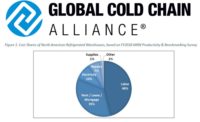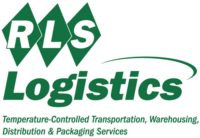With the final FSMA IA rule in effect for small businesses since July and large businesses a year before that, coupled with changes to the food supply chain in response to the pandemic, risk assessment and mitigation should be a priority now more than ever. For the refrigeration and frozen food industry specifically, changes have also evolved with the implementation of the Sanitary Transportation rule. Increases in product protection and awareness have raised the standard from what may have sufficed 10-15 years ago. And though the term “mitigation strategies” might be fairly new, general increases and improvements in food protection have been an ongoing industry evolution.
While navigating new regulatory requirements can be tedious, you are not alone in this endeavor. It is possible that procedures and steps already in place meet the intent of mitigation strategies. So how do you ensure that the risk assessments and mitigations in place significantly minimize or prevent the potential for significant vulnerabilities and raise the standard for food protection?
Whether your facility stores, transports, or produces refrigerated and-or frozen products, the first step in mitigation is to assess the risks of your operation. Any significant vulnerabilities require further mitigation. Once these vulnerable steps or points are identified, you must then assess any current practices and procedures in place that are significantly minimizing or preventing those risks. If these practices and procedures are effectively protecting from and minimizing these vulnerabilities in a significant way, then mitigation strategies have already been initiated. If not, then further mitigation is necessary.
As you work to identify and address significant vulnerabilities, an important resource is the FDA Food Defense Mitigation Strategies Database. While it does not have all of the answers, it is a great starting point. It can help assess what significant risks are in place, what mitigation strategies are already in place that fit the requirement or that could be slightly adjusted and updated to do so, and what mitigation strategies are not in place but could be helpful to have. While it is up to each facility to assess what vulnerabilities they have and the necessary mitigations, the Database provides an array of mitigation options and guidance as to what strategies already in place were on the right track. And because it comes from the regulatory source assessing the industry’s compliance, you can have confidence that it’s aligned with their expectations.
While each facility may have unique vulnerabilities in need of mitigation, there seems to be a common cold supply chain industry theme. Surprising or not, ‘clean/sanitize’ tops the Database list for equipment, components and locations with guidance such as "prior to use, after maintenance" and as applicable to locations "when security devices are breached." This includes mitigation measures for processing, transportation, and storage. Cleaning and sanitizing have already been intertwined with current industry GMPs and food safety standards for many years. However, with recent global pandemic events, cleaning and sanitizing has become even more vital to the protection of food and consumers, along with facilities and their employees.
Another method that many facilities default to is the addition of surveillance equipment like cameras in and around key areas of your facility. There are however lower cost strategies many facilities are already using to keep their operations protected. Additional mitigation strategies that have long been used in the industry and should be a priority for refrigeration and freezing operations include:
- Maximizing visibility of operations, equipment and locations by installing mirrors, adequate lighting and keeping visual obstructions clear;
- Prohibiting personal items from production, storage, or other restricted areas;
- Implementing peer monitoring, or the “buddy system” throughout your facility;
- Restricting and authorizing access as applicable to storage, loading/unloading and processing areas, equipment, access points, and operations through the use of personnel identification such as uniforms and badges;
- Using alarm systems, locks, and secure coverings such as shrouds, covers, lids, panels and seals to restrict access; and,
- Accepting incoming product only after the proper review of ‘documentation, chain-of-custody,’ and with appropriate ‘screening procedures’ in place.
If these sound familiar and are implemented because of industry food safety standards, then your core foundational mitigation strategies are already in place. You should further supplement these efforts with checks for product packaging integrity upon receipt and prior to use, transportation vehicle monitoring by authorized personnel, security measures to track transport vehicles, and the use of dedicated route schedules. With these additional measures in place, you’re well on your way to mitigating a number of probably risks in your supply chain.
Though the industry is always changing, there seems to be an increased awareness for food protection and ensuring appropriate mitigation strategies are effectively implemented. And while implementing those measures may seem difficult, know that you are not alone in the ongoing mission to protect food.




